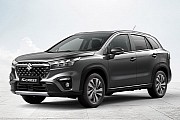history
Michio Suzuki, the founder of the Suzuki company, started pretty much like Toyota, in the textile industry, producing automated looms in 1909 in a small seacoast village called Hamamatsu. For years, his company was successful, but as time passed, Suzuki realized that he will have to diversify if he wanted to stay in business.
He turned to car making and in 1937 started developing a prototype. Unlike Toyota, who chose to copy an American six-cylinder engine, Suzuki created their own model, a four-cylinder version which put out 13 horsepower. But as WWII began, production of passenger cars became a luxury so Suzuki turned back to loom-making to support Japan's new cotton industry. All that stopped when the market crashed in 1951.
Versatile and ingenious, Suzuki now turned to making engines for bicycles. Unlike other engines that could be mounted to bikes, his motors had a unique feature that allowed the rider to pedal assisted by the engine or completely disconnect the pedals. This captured the attention of the government who granted funds to Suzuki for research.
During the 50s Suzuki released several models: in 1955 the Suzulight SS, a-2 door sedan, the Suzulight SD, a 2-door wagon, the SL – a 3 door sedan and the SP, a pick-up. Out of all of them, the SP proved to be the most successful, being mass-produced and improved during the 60s. Good sales for the SP which was regarded asa commercial type of vehicle, meant that in 1960 the Suzulight Van, the TL, was introduced. Other models from the 60s include the small Suzuki Fronte 360 and the Suzuki Fronte 500.
The famous off-road Jimny came in 1970, which had several variations of chassis and engine. The other cars from the 70s are the Cervo, Alto and the Fronte, also with a number of variations and improvements along the years.
As the 80s rolled in, Suzuki began expanding across the ocean, thanks to a business agreement with GM (in 1981) which gave them an important niche in the western market. Also, they began a partnership with the Indian car company Maruti in 1983 to produce cars there. A year later, in 1984, Suzuki Motor GmbH Deutchland opens up its doors in Heppenheim, Germany.
The Swift and the Vitara models were introduced in the late 80s and Suzuki reached a production of 10 million units. During the 90s, the company continued to expand with factories all over the world and several other 4x4 models were introduced. Right now, Suzuki is listed as being the 12th biggest automotive manufacturer in the world with 35 production facilities all over the Globe and being present in 192 countries.
expand






























